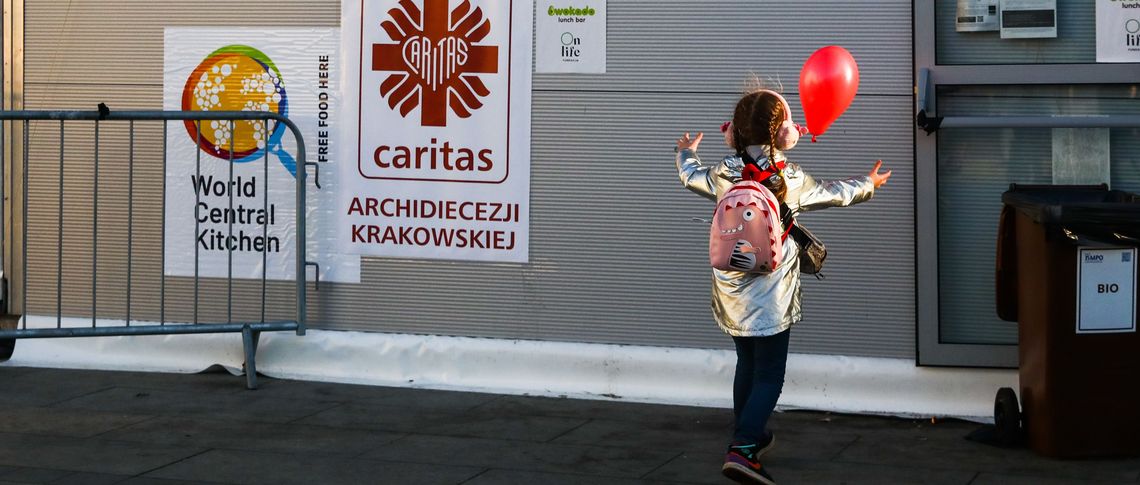How have Ukrainian refugees been received in Europe since the beginning of the war?
The reception was marked by extensive participation on the part of civil society. In the first three weeks alone, three million people arrived in Europe. This happened so quickly that state structures were unable to cope and civil society, as well as individual cities, took on the biggest role.
After one week, the European Union responded by providing ‘temporary protection’ and refraining from dispersal or repatriation measures. This was a very good measure to take. It made it possible for citizens all over Europe to take people into their homes. Ukrainians, in turn, could go to any destination they chose. So, it was a ‘free choice’ model – something that had previously not been thought possible. This openness for the participation of European citizens and the freedom for Ukrainians to determine their own place of residence led to an absence of conflict between the European states and to such a harmonious reception that it does not really feature in public debate today.
Is there anything that could perhaps have been improved about the way Ukrainians were received across Europe?
There are huge disparities within Europe. On the one hand, there are countries that have taken in many Ukrainians — interestingly, the top countries are not those directly bordering Ukraine but the Czech Republic and Estonia, where today about 3 per cent of the residents are refugees from Ukraine. On the other hand, there are countries that have taken in very few people. This includes Hungary, but also France and Sweden. So, the distribution is very uneven. Further developments after admission into the country also vary greatly from one country to another. In some countries, two-thirds of adult refugees are now working, whereas labour participation in other countries is very low. That means that the way in which reception has been structured within countries has also been very different. But the really interesting thing is that this has not led to any intra-European conflicts.
Of course, in the first few months there were difficulties and also protests in some countries against taking in Ukrainian refugees, for example in Poland and in the Czech Republic. But the great majority of the population was and remains in favour of accepting the refugees, and overall their arrival has gone relatively well, considering that more than four million Ukrainians which have made their way to Europe are currently benefitting from the temporary protection mechanism.
One problem, certainly, is the outlook for the future. Originally, it had been expected that the war would end quickly and that most of the refugees would be able to return after a few months. That is why the reception was officially referred to as ‘temporary protection’. But that has not been the case, and an end to the war is not yet in sight. Therefore, the European Union and the individual member states must now find a way to open up future prospect for the Ukrainians who have fled their country. This includes ensuring that the children can go to school and that the adults can find housing and work and integrate into the society. If you imagine a doctor not being able to practise medicine for over a year, that's bad – not only for the doctor herself, but also for the host countries. It is a big problem that the skills of the refugees with above-average qualifications – the female economic elite of Ukraine, so to speak, has come to Europe – are not being used in a way that is commensurate with their high qualifications.
What lessons can be learned from all this for the European asylum system in general?
The ‘free choice’ system which I have already mentioned and which was introduced for the Ukrainian refugees makes a big difference. Similar systems could be introduced for other groups that are overwhelmingly accepted as refugees – for example Syrians. This includes lifting the ban on taking up work and allowing immediate integration into the society, and also the possibility for people to take in refugees directly. Another lesson to be learned is that European citizens have shown themselves to be very welcoming and supportive. The usual discussions in which it is always assumed that people are afraid of immigrants have not turned out to be true. Instead, there has been very intensive contact between the host population and the refugees. This has contributed a great deal to the successful outcome.
Do you think this could be extended to refugees who do not come from Europe?
The willingness to accept refugees was also overwhelming in 2015. This was then undermined by the administrative practices of the states and by the campaigns against refugees, and of course by the terrorist attacks. That is all part of the truth. But a simplistic explanation based on cultural differences will not get us anywhere. A crucial difference is the fact that the war against Ukraine is taking place right on the border with the EU. An appropriate comparison would therefore be the reception of Syrians in Turkey. In that case, there were also about four million refugees involved,
and there was also great willingness shown and a great achievement on the part of Turkey, which should be acknowledged.
The distinctive feature of the Ukrainian migration is the severe fragmentation of families. Its temporary or provisional character also lies in the fact that many women and children are living in other parts of Europe while the men remain in Ukraine because they have to do military service. The permanent link back to the homeland and the possibility of return visits give this refugee situation its unusual character. They strengthen the bond with the embattled Ukraine through the close family ties.
What influence will the new EU migration pact, which European leaders have agreed upon three weeks ago, have on this? The agreement has been criticised for exacerbating the suffering at the EU's external borders. What do you think about it?
I fear that the deal will not work. The pact has been represented as a middle-ground between EU border countries that want more help with handling asylum seekers and those arguing that too many refugees have arrived and are moving without permission within the European Union. It foresees that asylum seekers can be held from certain countries in facilities at the EU’s external borders while their claims are being processed – with a stricter asylum procedure for those deemed unlikely to be accepted. Inland countries would be given the choice of accepting a certain number of asylum seekers or paying into a joint EU fund. The pact still has to get through final negotiations at the European Parliament.
If you look at Greece, the way things are managed was no changed in a long time – despite substantial financial aid from the European Union and despite the fact that the vast majority of refugees migrate onwards from there. So, I'm very sceptical about the idea that the deal will somehow make the way the problems are dealt with at the European external borders better than it has been so far. I am a little more positive about the Spanish authorities, who are getting a slightly better grip on the situation. However, I think the practical difficulties are very serious overall and I think the whole concept in itself is riddled with inconsistencies.
This interview was conducted by Alena Bieling.






